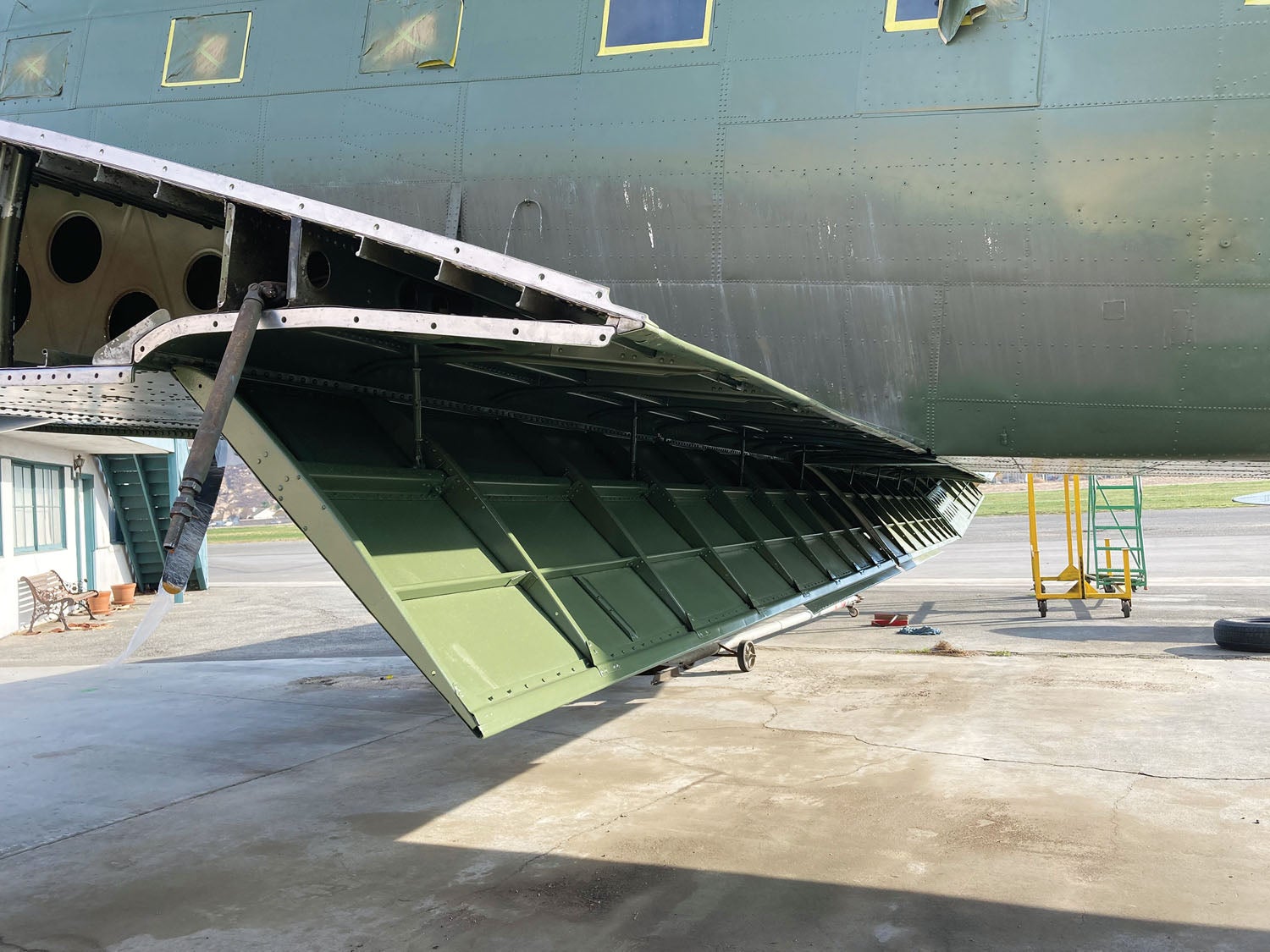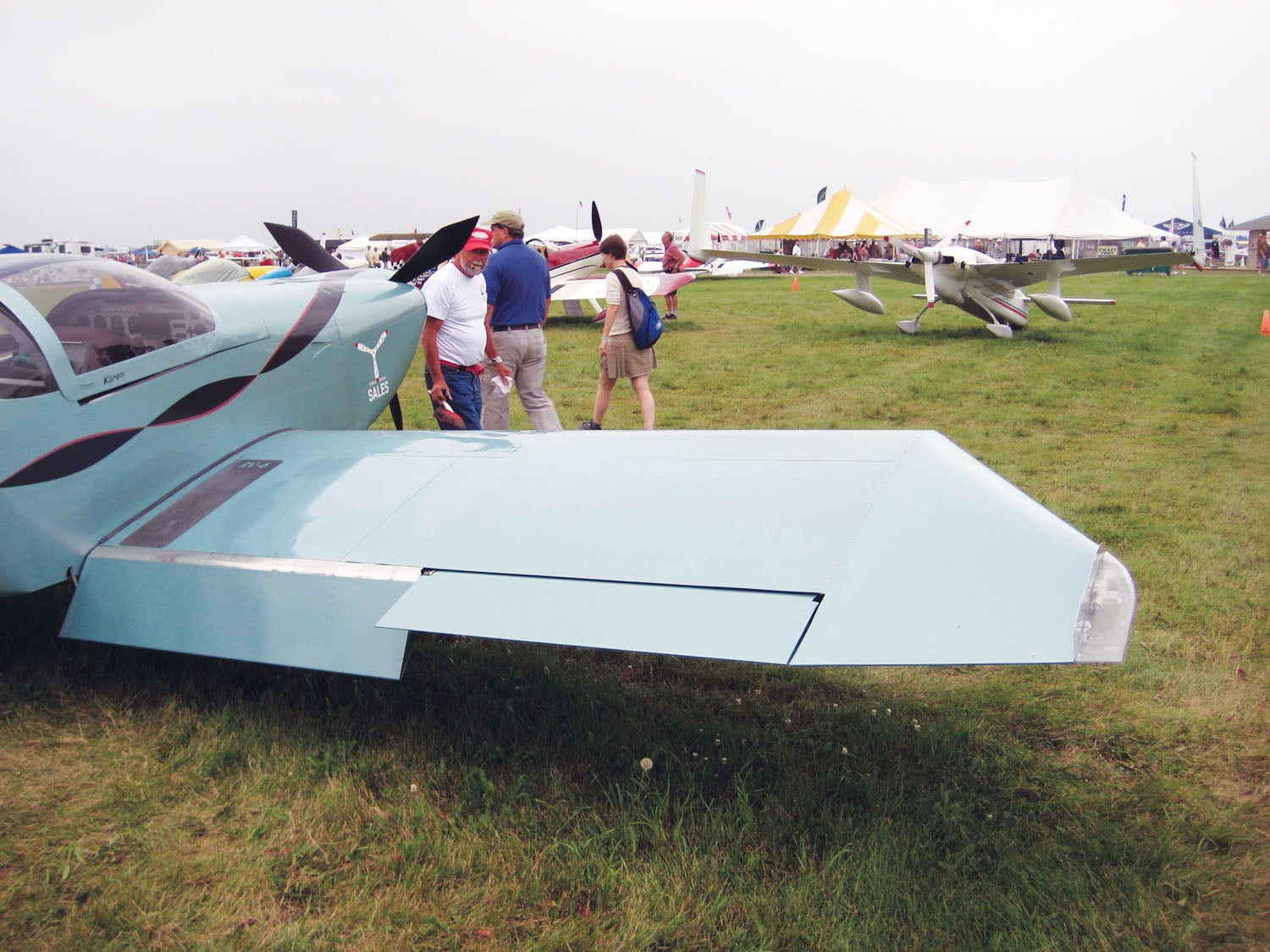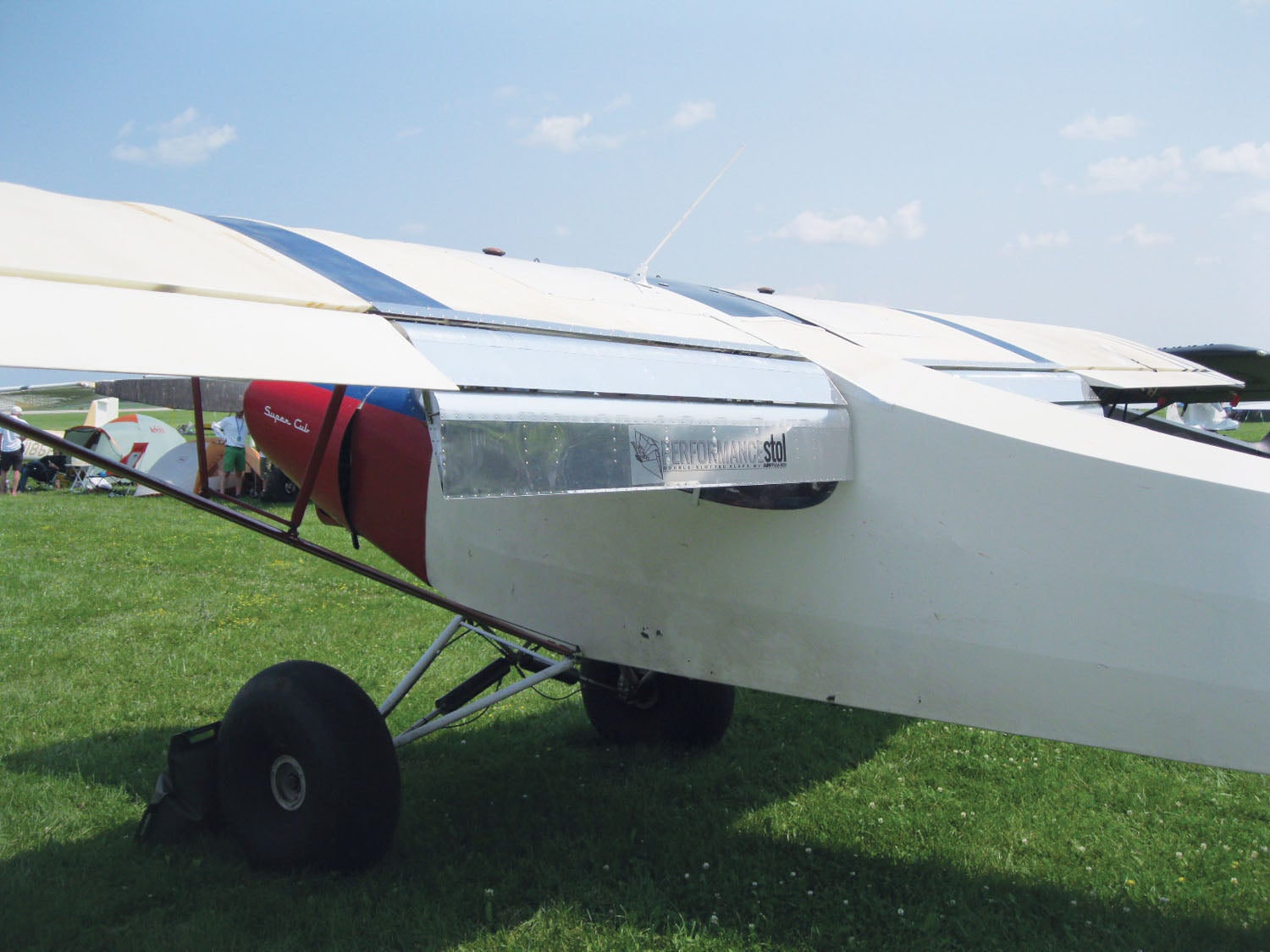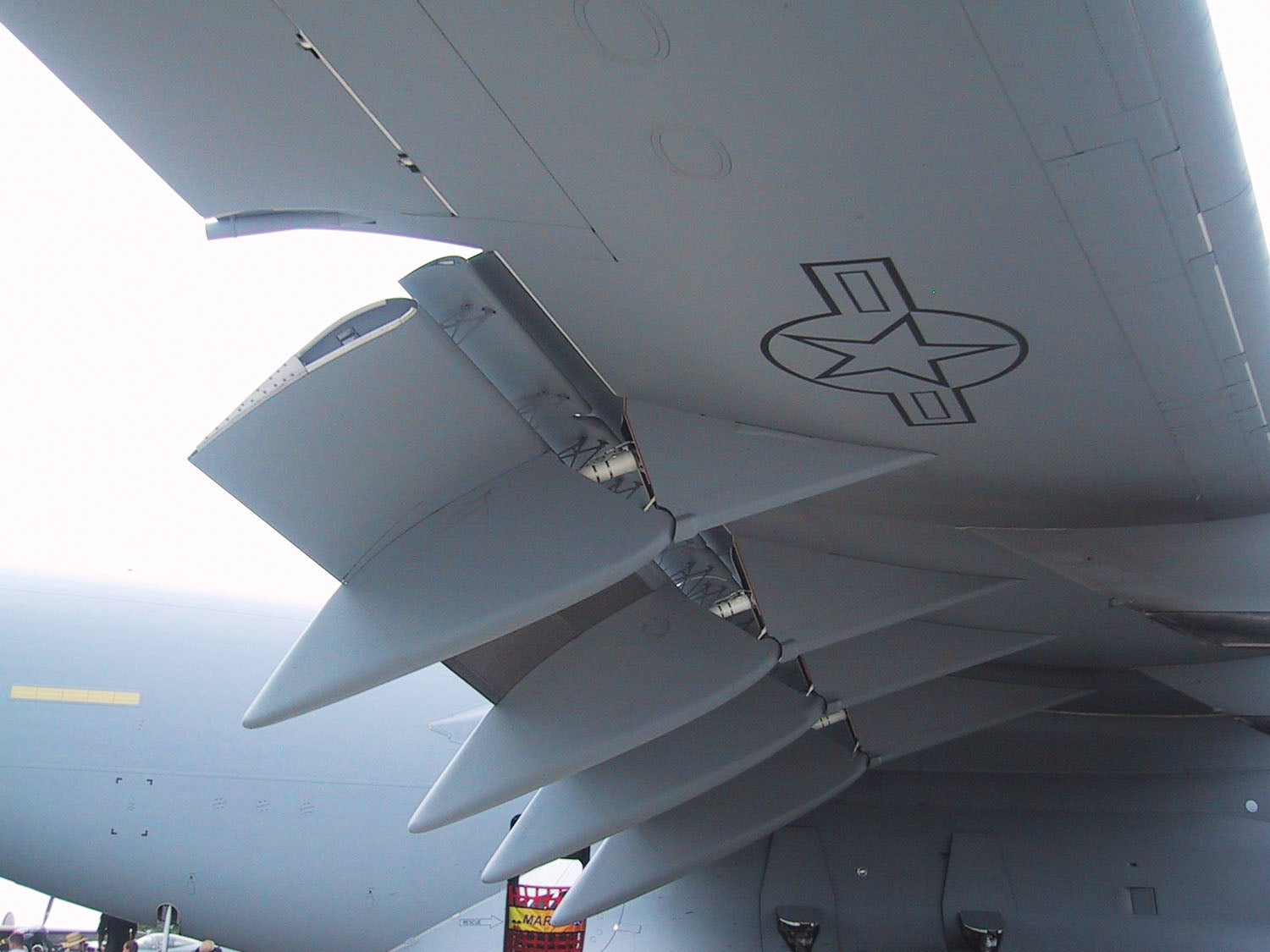Last month we took a look at the trade-offs the designer should consider when defining the flap system for the airplane. The choice comes down to a trade between lift, drag, mechanical complexity and weight.
There are several widely used types of flaps, and this month we’ll take a look at how they perform and how they compare.
Split Flaps
The split flap was the earliest high-lift system to make it onto production airplanes. It was a feature of the first American monoplane fighter (the Boeing P-26 Peashooter) and was also used on the DC-3 and the B-17. A few types today still use split flaps, including the Cessna 310 light twin.

A split flap is a panel of the lower-surface skin that is hinged at its front so that it can deflect downwards. What makes it a “split” flap is that only the lower surface of the wing moves when the flap is deflected, “splitting” the trailing edge of the wing. When a split flap is deployed, there is a large vertical gap between the trailing edge of the flap and the trialing edge of the fixed upper surface of the wing, converting the aft portion of the wing into a wedge with the sharp edge forward.
Split flaps are mechanically simple and stow easily, so they produce essentially no drag increment when retracted.
The lift increment split flaps produce is large enough to be quite useful for reducing landing speed. They also produce a lot of drag because of the large base area produced between the fixed upper surface of the wing and the trailing edge of the deflected flap. This high drag helps steepen the approach slope, so it is useful for landing provided the airplane has enough power to successfully climb away from a missed approach. The drag of split flaps is too high for them to be useful in improving takeoff performance.
Plain Flaps
A plain flap is a simply hinged surface attached to the trailing edge of the wing like an aileron or other control surface. Plain flaps produce a moderate maximum lift increment. At lower deflections (below about 15°) plain flaps produce a useful increase in maximum lift at a relatively small drag penalty.

The small drag increment at moderate deflections makes it possible to use plain flaps to shorten takeoff distance by reducing liftoff speed without exacting a prohibitive drag penalty in initial climb.
We can also use plain flaps to adjust the camber of the wing in flight to optimize performance. With proper design, an airfoil can incorporate a plain flap that produces essentially zero drag increment over a deflection range of about +/- 10°. This allows the pilot to adjust the wing shape in flight to optimize efficiency. It is particularly useful on laminar-flow airfoils to maximize the amount of laminar flow over a wide speed range. This approach is not common on powered airplanes that tend to cruise at a single, preferred cruise speed, but it is a feature of most high-performance sailplanes, which thermal and climb at relatively low speed and then need to efficiently penetrate cross-country at higher speed.
The primary advantages of plain flaps are mechanical simplicity and the fact that they can be used for both takeoff and landing. The lift increment they produce is less than some other systems, but it’s enough to make a difference at the wing loadings typical of single-engine light airplanes.
Slotted Flaps
The lift increment produced by a plain flap is limited by airflow separation at the hinge line. Once the flap deflection reaches about 30°, the flow starts to separate if the flap is deflected beyond that. More deflection produces a lot more drag, but very little additional lift.

The way to delay flow separation to higher deflections is to incorporate a properly shaped slot at the flap hinge line. The slot collects high-energy air from the lower surface of the wing and ejects it onto the upper surface of the deflected flap. This fresh air reenergizes the boundary layer on the flap and helps keep the flow attached.
Slotted flaps increase maximum lift more than plain flaps, so they are a good choice for improving landing performance. A properly designed slotted flap can have low enough drag at small deflections to help takeoff performance too, but the drag of a slotted flap is higher than that of a plain flap because of the airflow though the slot. The drag of the slot flow also makes slotted flaps unsuitable for in-flight camber changing.
Slotted flaps are more difficult to implement mechanically since the hinge geometry must move the flap in such a way that the slot is sealed when the flaps are stowed for cruise, but open when the flaps are deflected. This usually means that some portion of the hinge mechanism will protrude below the wing lower surface and be exposed to the airflow. It’s also common for some portion of the slot to remain open on the lower surface when the flaps are stowed, even though the slot seals internally so no net airflow goes through the slot.
Both of these factors exact a small drag penalty as compared to a clean wing or a clean wing with plain flaps. Accordingly, the extra lift increment from the slotted flap must improve performance enough to be worth this drag penalty.
Fowler Flaps
A Fowler flap is a slotted flap that translates aft as well as deflecting downward. The aft translation of the flap opens the slot but it also increases the wing area. This means that a Fowler flap system can generate even higher lift than a simple slotted-flap system because it not only has the slot effect to renew the boundary layer over the flap, but it increases the total area of the wing at the same time.
Fowler flaps are more complex and likely to be heavier than plain flaps or simple slotted flaps because of the kinematics and mechanisms required to provide the aft translation of the flap system as it deflects. To get the aft translation, the flap is usually mounted to either a set of tracks or hinges that are offset well below the wing lower surface.
Fowler type flap systems are appropriate for high-performance, high-wing-loading airplanes.
As the demands of cruise performance force the aircraft to a high wing loading, the cost and complexity of a Fowler flap system becomes an acceptable penalty because it is the only way to give an aircraft with this high wing loading acceptable takeoff and landing distances and stall speed.
Multiple-Slotted Flaps
A variation of the Fowler flap system that is a feature of essentially all jet transport aircraft is a multiple-slotted flap. In a multiple-slotted flap system there are one or more small airfoil shaped vanes in front of the main flap element. These vanes are hidden within the wing when the flaps are retracted and extend along with the main flap to form a venetian blind like cascade. Each vane turns the air downward somewhat, and each slot pumps more high-energy air into the flap boundary layer.

Multiple-slotted flaps appear at opposite ends of the performance spectrum. They are an essential feature of all jet transport aircraft and also figure prominently on extreme STOL and bush planes.
Double- and even triple-slotted flaps have been used on airliners. While they are complex, they can produce very high maximum lift coefficients and are a fundamental technology that enables the performance of high-speed jet transport aircraft.
It’s a challenge to come up with a flap system that provides enough lift increment for a heavy transport aircraft to take off and land in acceptable distances and still be low enough drag to give the airplane good climb performance, even with one engine inoperative. To meet these requirements, multiple-slotted flaps require elaborate track or hinge systems and actuation to support all of the parts and make sure they deploy in the proper relationship to each other over the entire range of flap settings. This is not a trivial engineering task and it increases the weight and cost of the flap system significantly.
For general aviation multiple-slotted flaps are rarely worth the extra weight and complexity because the wing loadings required for piston-engine and single-engine turbine aircraft are not high enough to require the very high maximum lift coefficients offered by multiple-slider flaps. The only exception to this is extreme STOL airplanes that need every bit of lift they can generate at low airspeed.
Photos: Barnaby Wainfan.














Thanks again for a great article. I have one question, are Cessna “Para Lift” flaps slotted flaps or Fowler flaps? Based on the way they deploy I’ve always thought they were slotted flaps, but Cessna literature and most pilots insist they are Fowler flaps based on the track system they use.
Thanks again.
Phil
Dear Mr. Wainfan
Could you say something about Gurney flaps? Are they really the simple devices with little drag penalty and considerable benefit if sized right that some articles that are accessible online argue? Is there a reason they are not or not very often seen on airplane wings? Would you be aware of any design with a deployable Gurney flap?
Thank you!
Samuel
As far as I can tell, the Wren 460 is the only GA aircraft ever built with full span double slotted fowler flaps. The performance is impressive, but apparently the extra complexity isn’t worth it. Any comments?